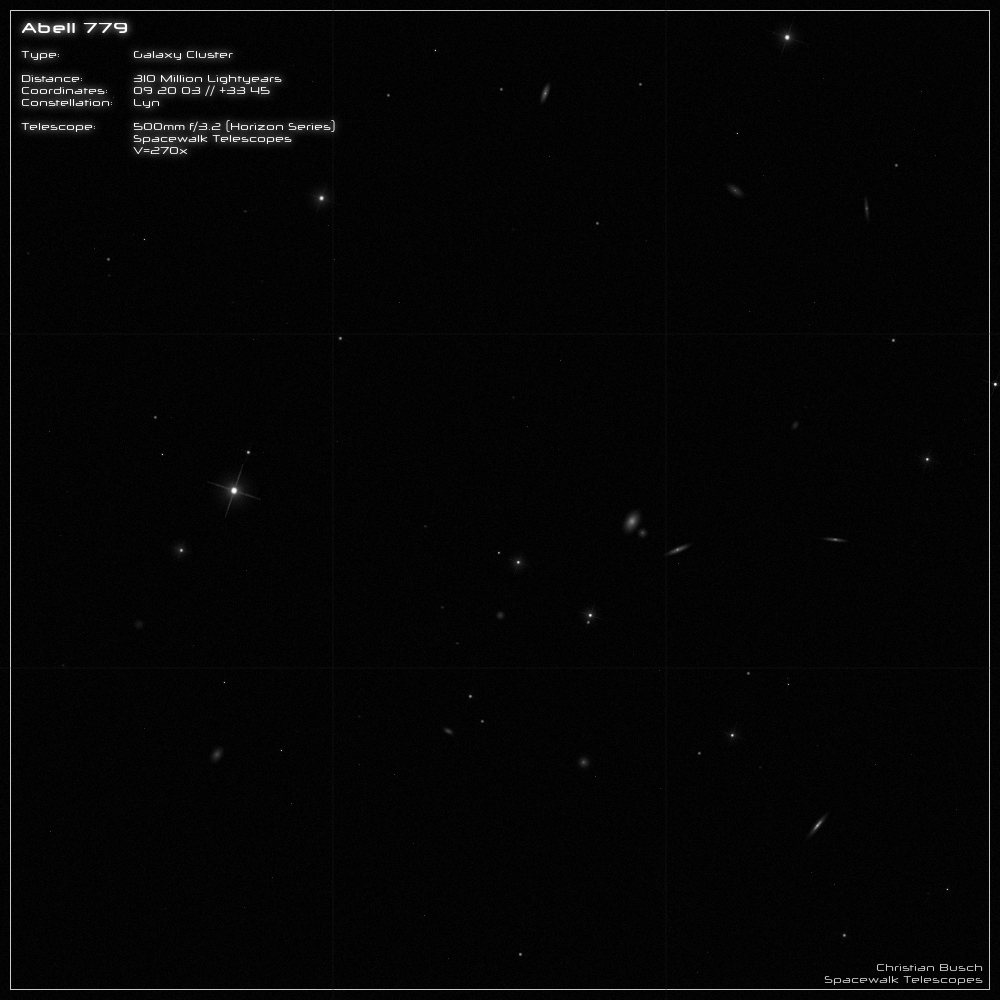Abell 779 in Lynx
Abell 779 is a cluster of galaxies in the constellation Lynx, which can be found less than one degree south of the bright star "Alpha Lyn". The cluster
is around 310 million light-years away from Earth and has an apparent diameter of 50 arcminutes, which corresponds to a true size of around 4-5 million
light-years. ACO 779 contains around 30 galaxies of varying brightness. The redshift is given as z= 0.0217, which means that the galaxies are moving
away from us at a speed of around 6,900 km/s.
The brightest galaxy in ACO 779 is NGC 2832, which was discovered by F.W. Herschel in December 1785. It has an apparent magnitude of 11.8mag
and a size of 3x2' arcminutes. It is a gigantic, elliptical galaxy of the Hubble Type "E2" with a diameter of around 270,000 light-years. Its absolute
magnitude is M= -23.1mag, which corresponds to a luminosity of 150 billion suns. At its center resides a supermassive black hole (SMBH) with a mass
of 3.6 billion suns.
Together with NGC 2830 and NGC 2831, NGC 2832 forms the galaxy trio "Arp 315", whereby the galaxy could even interact with NGC 2831.
----------------------------------------------------------------------------------------------------------------------------------------------
Abell 779 looks really nice in my 20" telescope. The galaxy cluster extends over a large area, which is why you have to observe the many galaxies
individually at a higher magnification. In contrast to the vast majority of other galaxy clusters, there are quite a few galaxies that appear to be Edge-On.
Especially impressive is of course the inner area around NGC 2832 (Arp 315). The galaxy appears quite bright and extended, so that its halo almost
reaches NGC 2831. In the center of NGC 2832 there is a brighter area with a stellar nucleus. In contrast, the adjacent galaxy NGC 2830 appears very
elongated with an elongation of 6:1. A great trio of galaxies. :)

